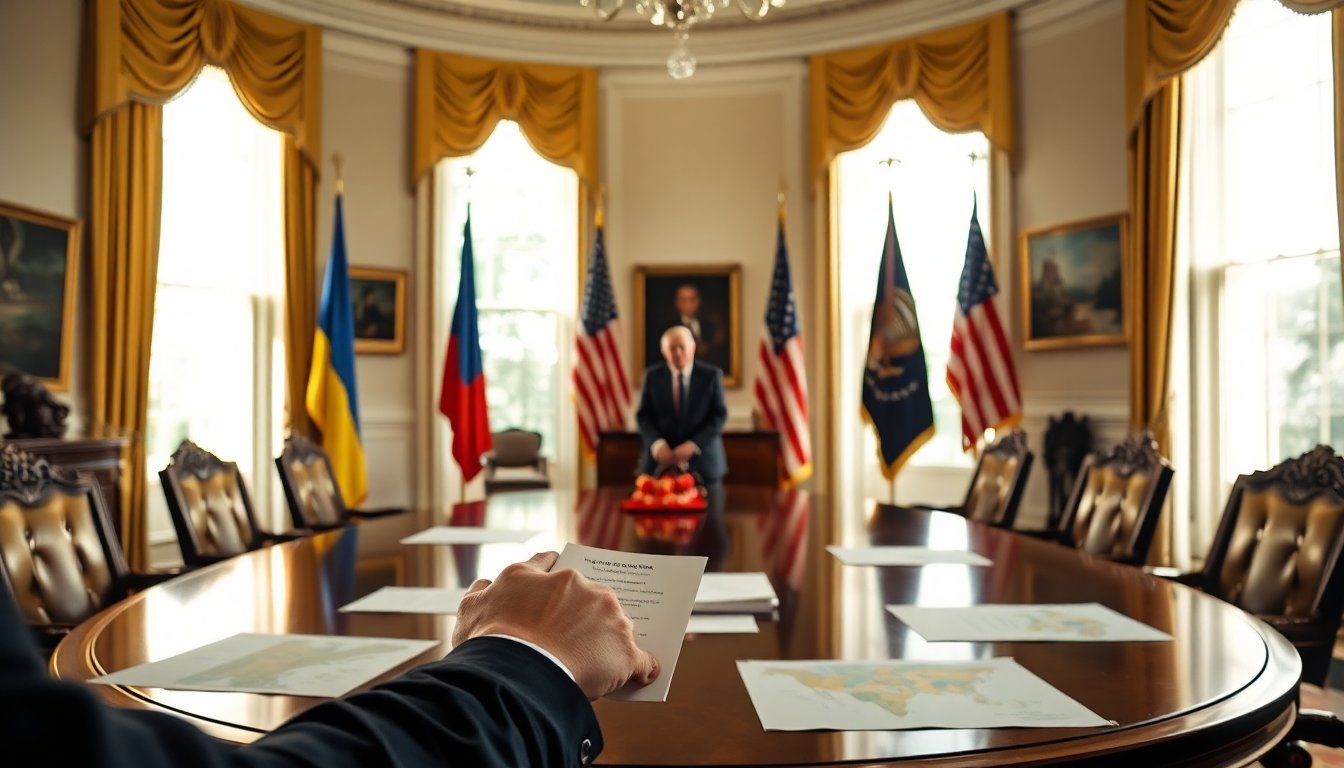Table of Contents
Ukrainian President Volodymyr Zelenskyy recently sought to enhance his country’s defense capabilities during a meeting with U.S. President Donald Trump. However, the encounter did not yield expected results due to a lack of strategic planning and the urgency of Ukraine’s requests. Following a significant phone conversation between Trump and Russian President Vladimir Putin, the dynamics of the meeting shifted considerably.
Zelenskyy aimed to secure a supply of Tomahawk cruise missiles, which he believed could significantly impact Ukraine’s efforts against ongoing Russian aggression. Nevertheless, the timing and content of his agenda appeared misaligned with the broader geopolitical context, leading to a less productive meeting.
Understanding the context of the meeting
The White House meeting was described as amicable, with Trump labeling it as cordial. This marked a notable change from earlier contentious exchanges between the two leaders. Zelenskyy, recognizing the importance of deference, approached the meeting with a respectful demeanor. Despite the positive atmosphere, the meeting lacked substance, primarily because Ukraine’s priorities seemed rushed.
Timing and expectations
A Republican foreign policy expert, speaking on the condition of anonymity, noted that the meeting was hindered by both poor timing and inflated expectations. The day prior, Trump had engaged in a lengthy two-and-a-half-hour conversation with Putin, during which he had teased the Russian leader about supplying Ukraine with missiles. This context should have prompted Zelenskyy to recalibrate his approach and temper his expectations regarding military aid.
The expert pointed out that Trump was unlikely to endorse the Tomahawk request before his upcoming meeting with Putin in Budapest. Thus, Zelenskyy’s insistence on these missiles was viewed as misguided, especially given the complex U.S.-Russia relationship.
Strategic missteps in Ukraine’s requests
Despite advice from cautious Republican allies in Washington, Zelenskyy’s team persisted in their push for the Tomahawk missiles. Many in the U.S. government express concerns that supplying such weaponry might escalate the conflict and draw the U.S. deeper into the war. Additionally, the Pentagon’s apprehension regarding its own military stockpiles further complicated the matter.
Alternative defense needs
By focusing heavily on the Tomahawk request, Ukraine overlooked several critical defense requirements. Among these were air-to-air missiles for their F-16 and MiG aircraft, as well as surface-to-air missiles essential for operating Patriot air-defense systems. These capabilities are crucial for countering the increasing drone and missile strikes from Russia, which have escalated significantly.
Additionally, there was a missed opportunity to discuss the potential use of Russian sovereign assets to fund Ukraine’s defense efforts. This proposal, which had garnered the support of U.S. Treasury Secretary Scott Bessent, was overshadowed by the focus on Tomahawks. The U.S. holds approximately $7 billion in Russian assets, and a more coordinated effort with European allies could have unlocked access to larger funds for Ukraine.
Energy needs and logistical challenges
As Russia intensified airstrikes on Ukraine’s energy infrastructure, discussions surrounding liquefied natural gas (LNG) imports from the U.S. also fell short. Ukraine’s state gas firm, Naftogaz, has made some progress, purchasing around 0.5 billion cubic meters of U.S. LNG, but the country requires significantly more to endure the harsh winter months ahead.
Energy Minister Svitlana Hrynchuk indicated plans to boost gas imports by 30 percent, yet negotiations regarding financing mechanisms for LNG purchases have encountered hurdles due to restrictive loan terms from the U.S. Export-Import Bank. This situation reflects the broader challenges faced by Zelenskyy’s delegation, which included high-ranking officials like Chief-of-Staff Andriy Yermak and Prime Minister Yulia Svyrydenko. Their visit, aimed at securing substantial agreements, ultimately resulted in a lack of concrete outcomes.
Zelenskyy aimed to secure a supply of Tomahawk cruise missiles, which he believed could significantly impact Ukraine’s efforts against ongoing Russian aggression. Nevertheless, the timing and content of his agenda appeared misaligned with the broader geopolitical context, leading to a less productive meeting.0


